Hands On: Piaget Polo Skeleton Ceramic
A sleek, slim modern skeleton.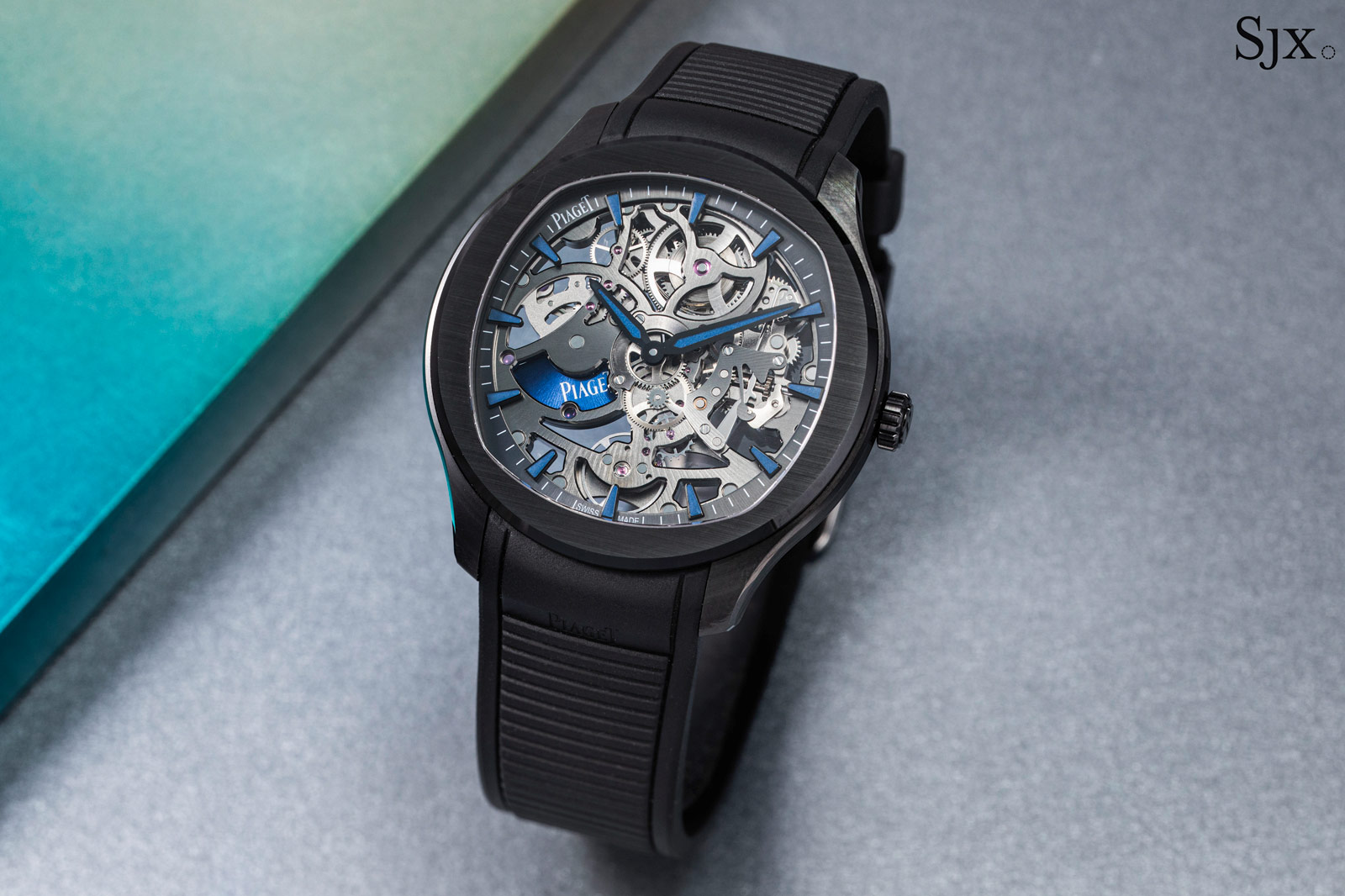
In its original form, the Piaget Polo is an all-gold watch emblematic of 1970s style, but the model’s latest incarnation is the opposite. The Polo Skeleton Ceramic has an ultra-thin movement open-worked in a clean, geometric style, presented in brushed black ceramic case.
Based on the original in steel, the Polo Skeleton Ceramic is dressed in restrained colours of black, grey, and dark blue, for a minimalist, low-key aesthetic.
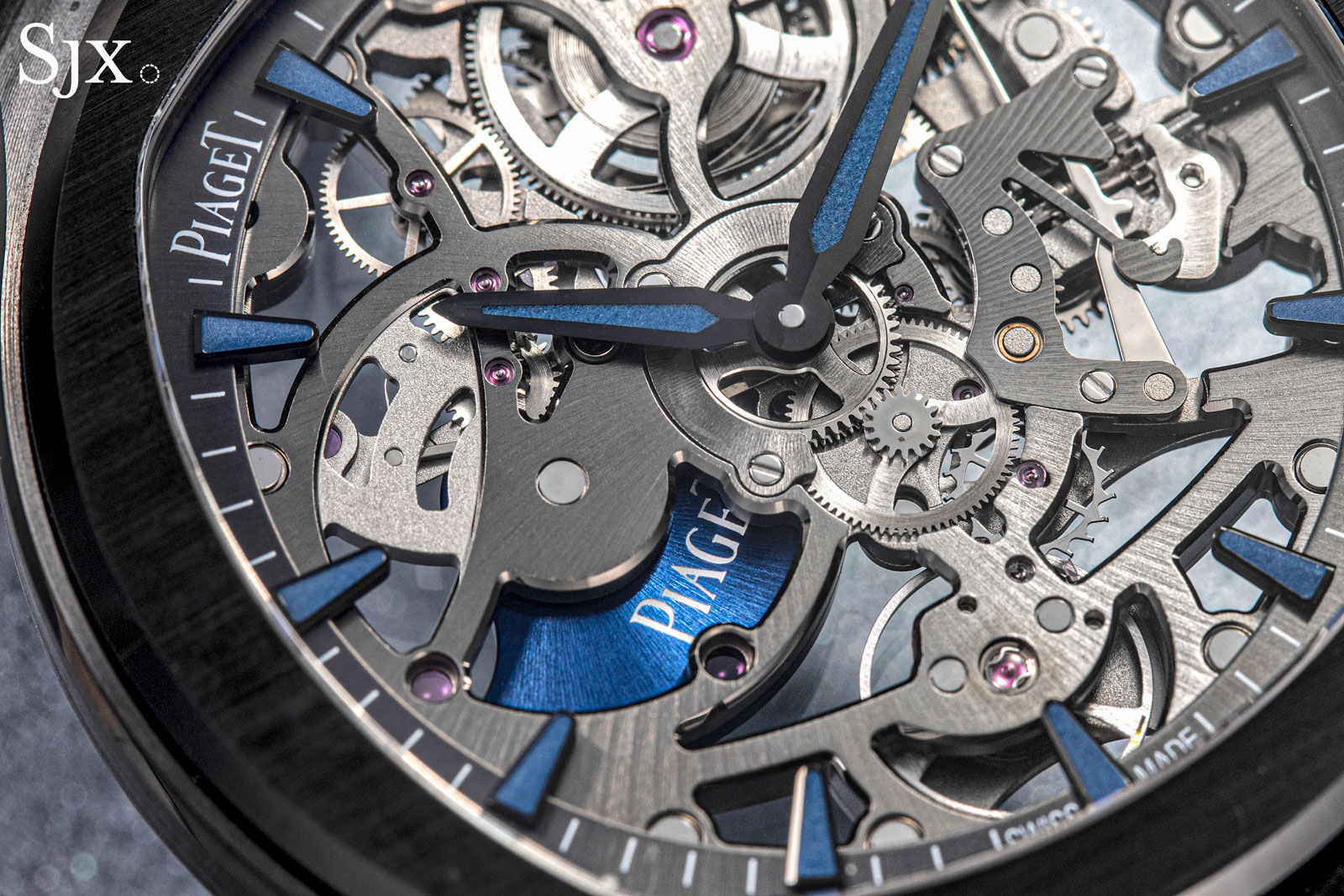
Initial thoughts
The modern Polo has evolved since its original form of 2016, and with the evolution the model has gained its own character. While the original version felt like a typical luxury-sports watch with its patterned blue dial and prominent bezel, the skeleton in ceramic looks original.
The matte black ceramic case matches the technical appearance of the movement, though I would have preferred grey or even white Super-Luminova. The blue lume matches the rotor and Piaget’s corporate colour, but it is too unorthodox (and it also glows less brightly).
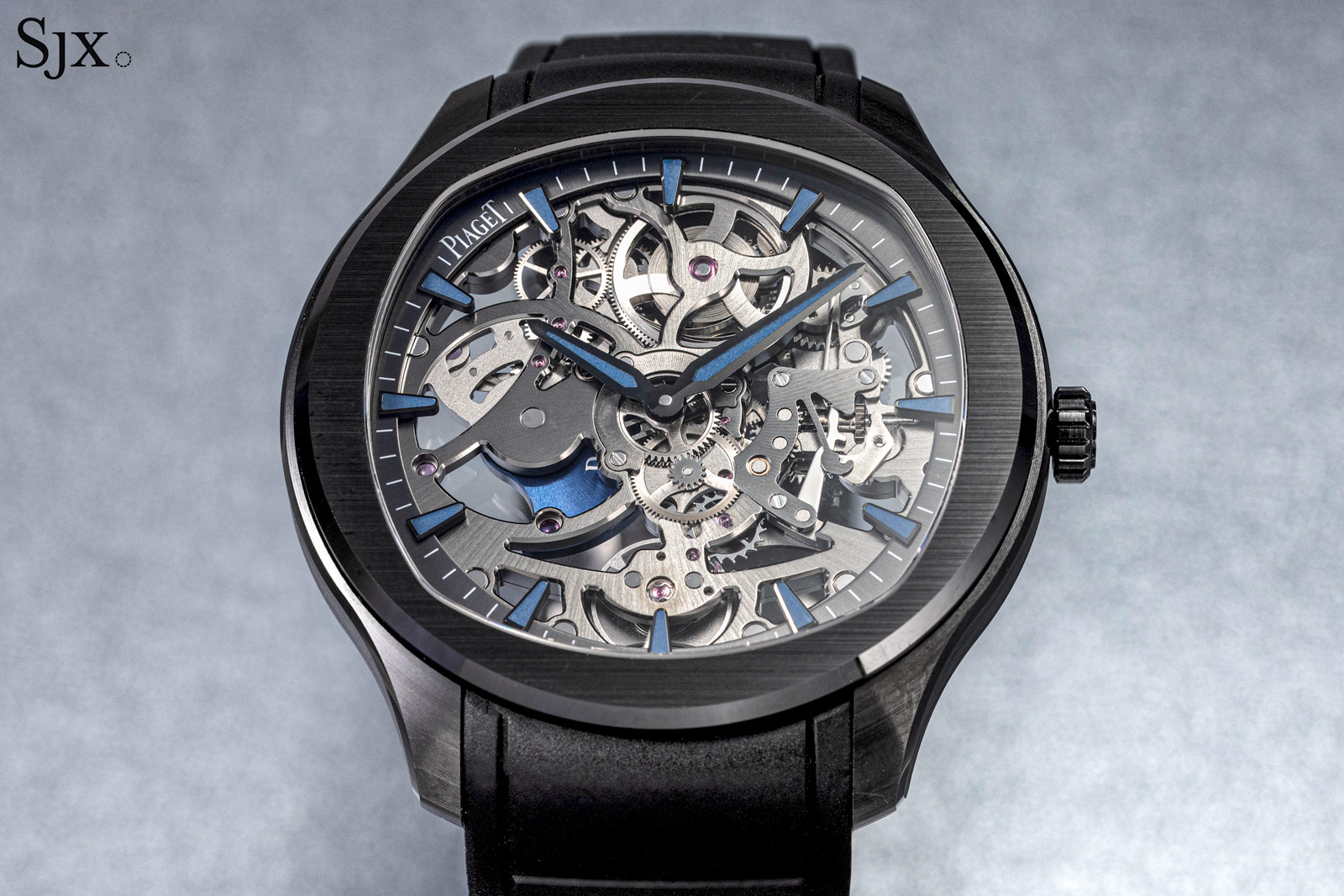
Though finished with the same alternate brushed and polished surfaces as its steel counterpart, the ceramic case feels more refined given the comparative challenge of finishing ceramic to the same degree as steel.
The cal. 1200S1 is open worked in a modern style that is typical of many current skeleton movements. All of the bridges have clean lines and surfaces, which complements the case and dial aesthetic. The movement finishing is industrial-haute horlogerie, though I would have employed a more refined regulator index (that Piaget has installed on some other in-house movements).
Overall, the Polo Skeleton Ceramic is executed well, and more importantly, has a more distinctive identity than its steel counterpart.
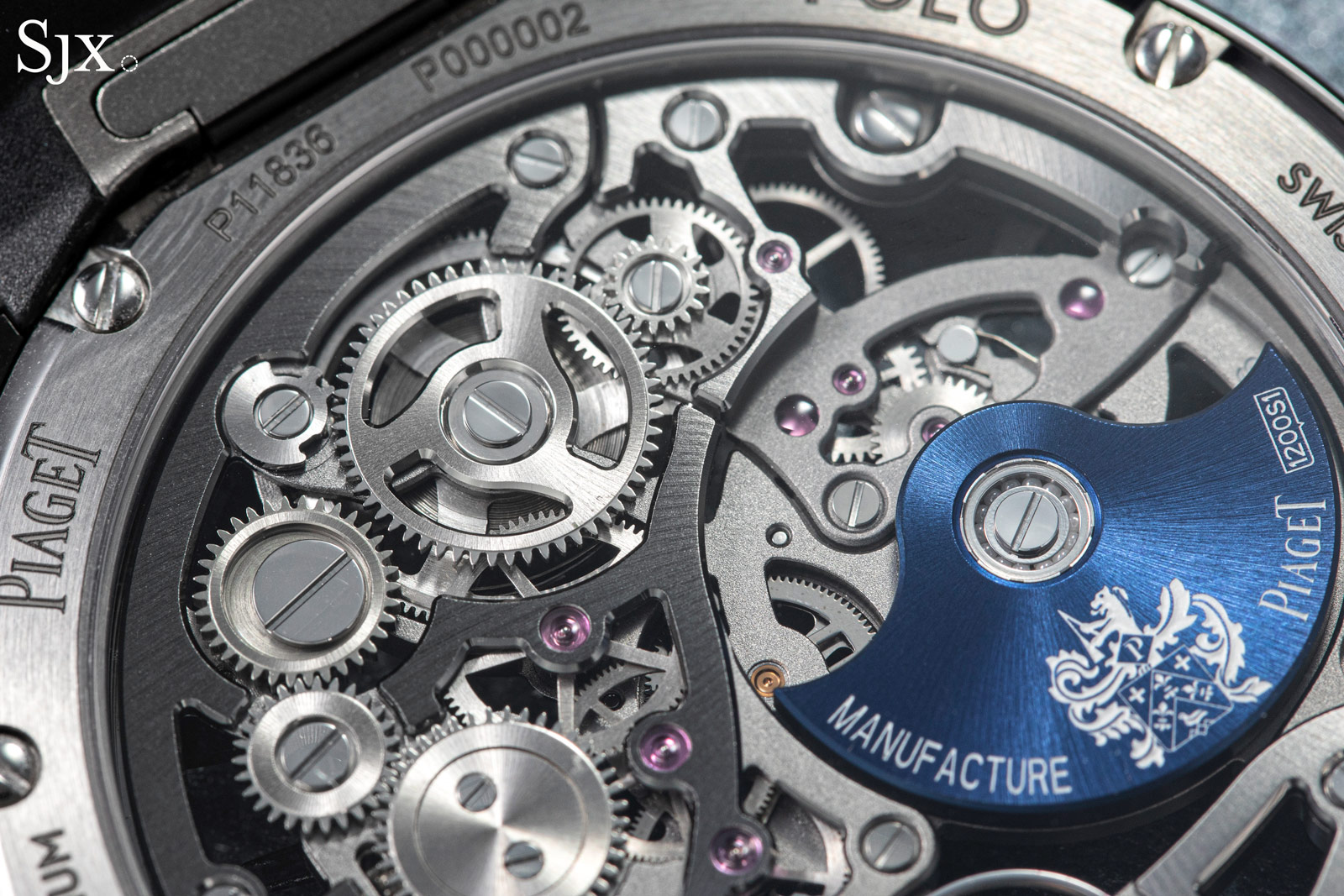
A modern Polo
The new Polo Skeleton has the almost same dimensions as the steel model, though it looks and feels smaller due to the dark colours. Though it has the same design as the steel Polo, this looks more distinct as the black ceramic case and skeleton movement give the watch a character of its own.
At 42 mm in diameter and a mere 7.5 mm high, the case has flat and elegant proportions, a feel that is accentuated by the lightweight, all-black case. On the wrist, the watch feels sleek and sits well.
Though the integrated rubber strap delivered with the watch is the logical choice for a sports watch, the slim profile of the case would be enhanced with a thin fabric strap.
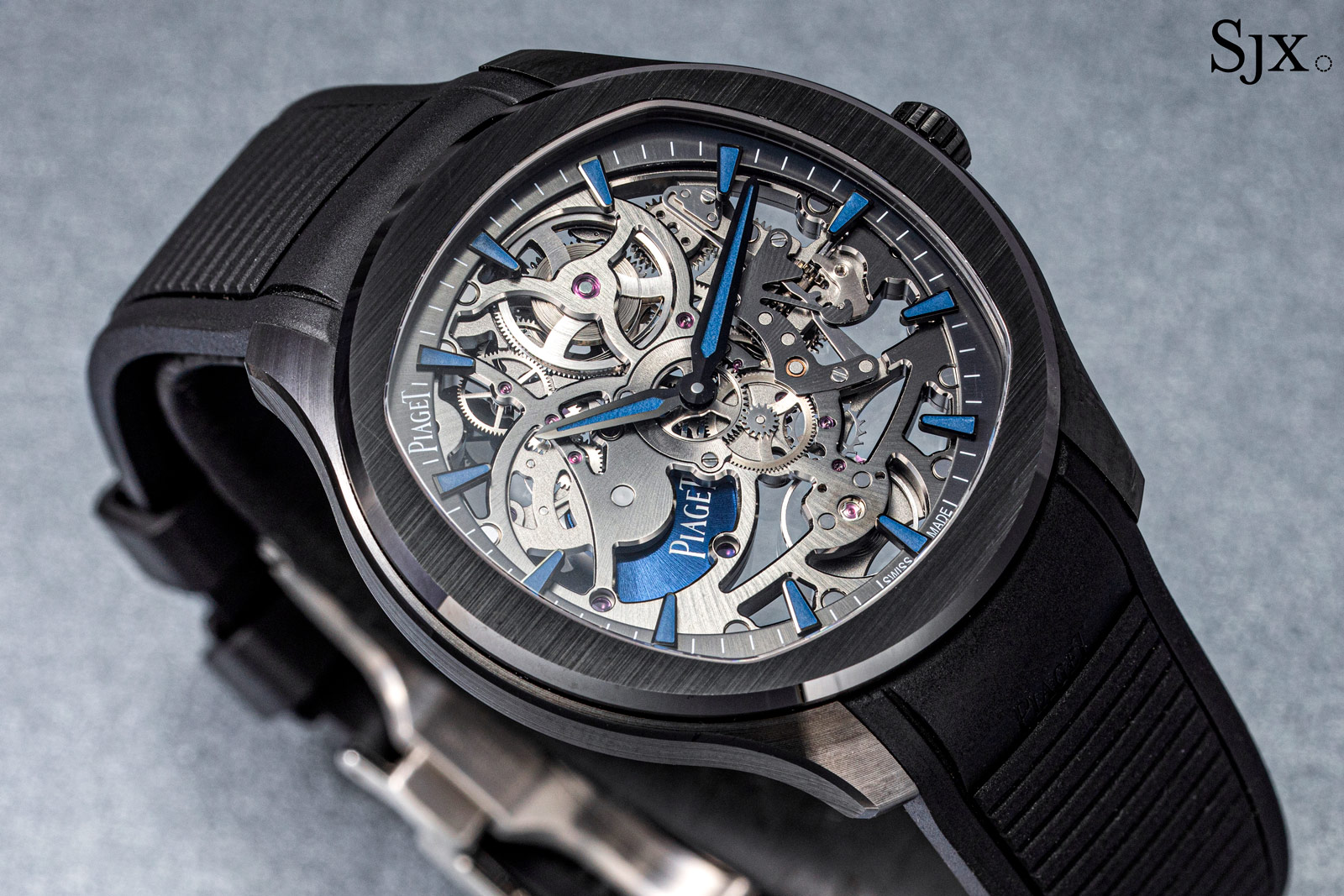
The ceramic case is finished precisely, with brushed surfaces and mirror-polished bevels on both the case middle and bezel
The sleek, monochromatic case aesthetic continues on the dial, which is also the movement. The cal. 1200S1 is finished with a dark grey ruthenium finish that complements the ceramic case.
Though the movement is finished in dark colours, the grained finish on the bridges and base plate, as well as the mirror-polished bevels, catch the light at certain angles, giving it a brighter appearance than the case.
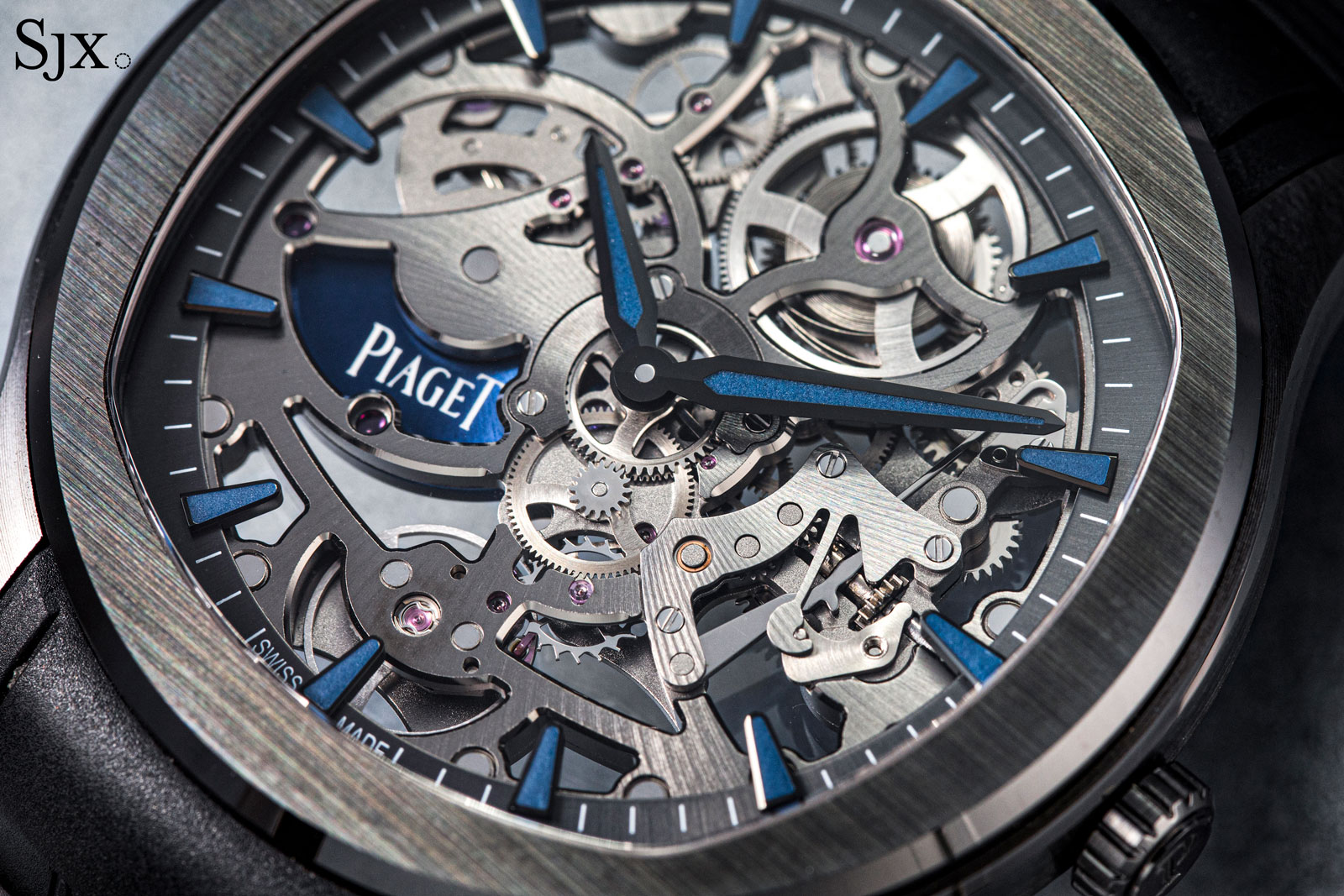
The only hint of colour on the dial comes from the rotor that’s coated in a bright, metallic blue, along with the hands and hour markers are filled with dark blue Super-Luminova to match.
I personally prefer more neutral or conventional lume, namely white or even pale green, as opposed to the dark blue lume employed here. While I can see the purpose of colour matching with the rotor, conventional luminous paint would not only glow brighter, but suit the monochromatic palette better, especially since the printed markings on the dial are in white.
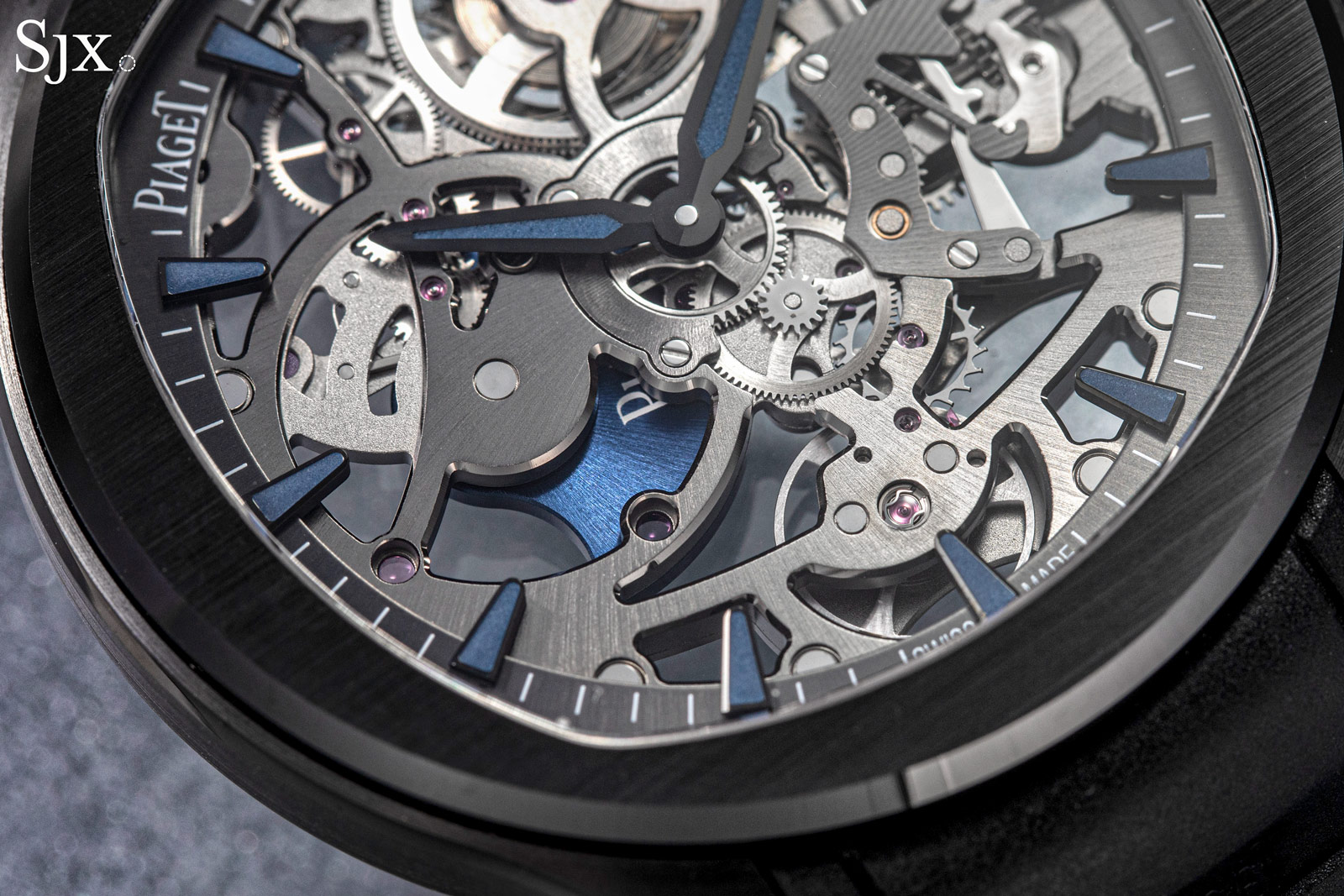
Like most ceramic watches, the ceramic case contains an inner case of metal alloy – here that’s DLC-coated titanium – so that the case back can be screwed into the inner case. That’s because ceramic is too hard to repeatedly withstand the torsional stress from screws or a screw-down back.
Because of the case construction, the Polo Skeleton Ceramic is 1 mm thicker than its steel equivalent, though the increase in thickness is not discernible on the wrist, unless the watches are placed side by side.
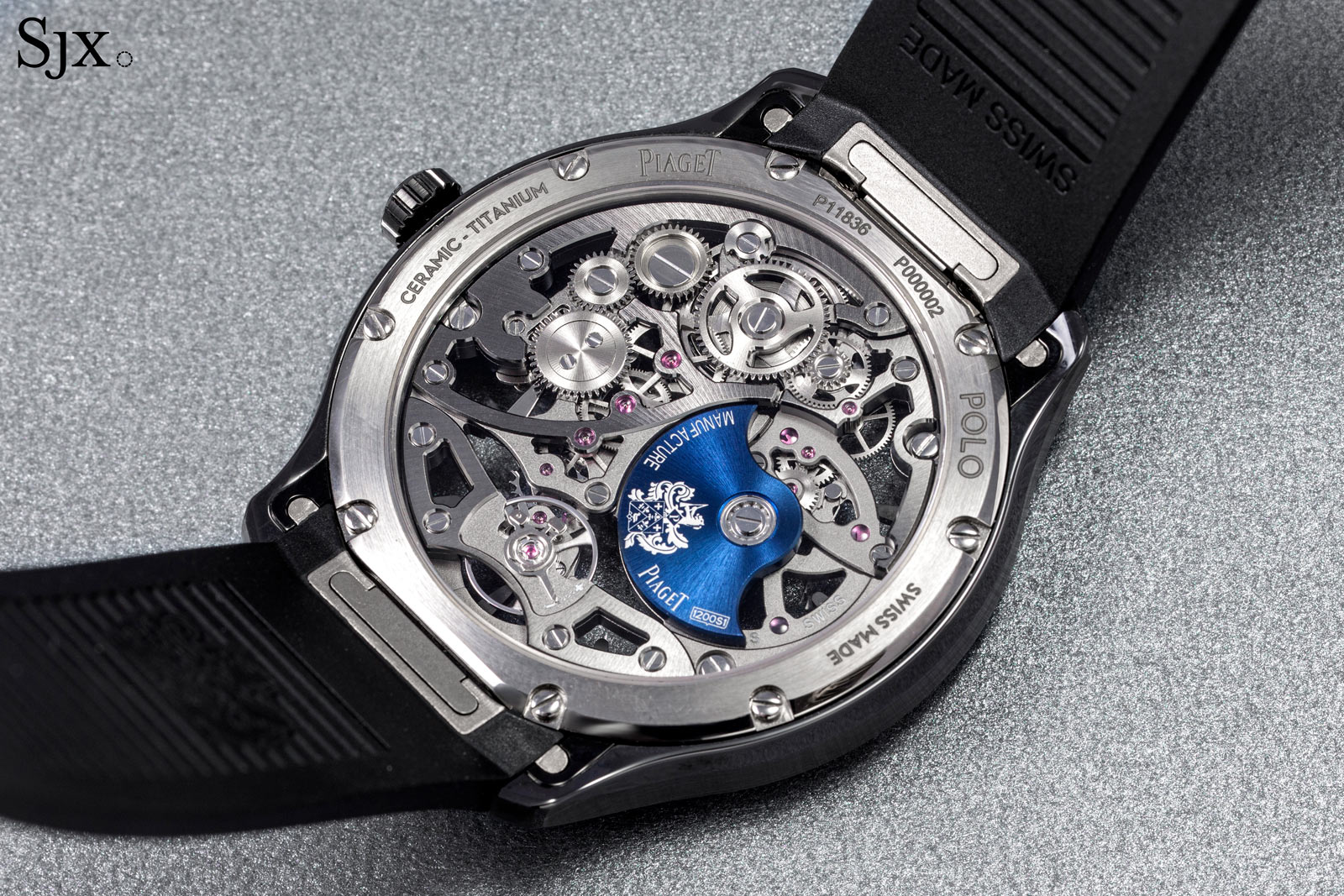
The rubber strap features an integrated quick-release mechanism
The cal. 1200S1 within is the skeleton version of the cal. 1200P/1208P, which was the thinnest automatic movement in the world at its launch. Though now superseded by even thinner movements, the cal. 1200P remains one of the slimmest movements offered by Piaget at just 2.35 mm high.
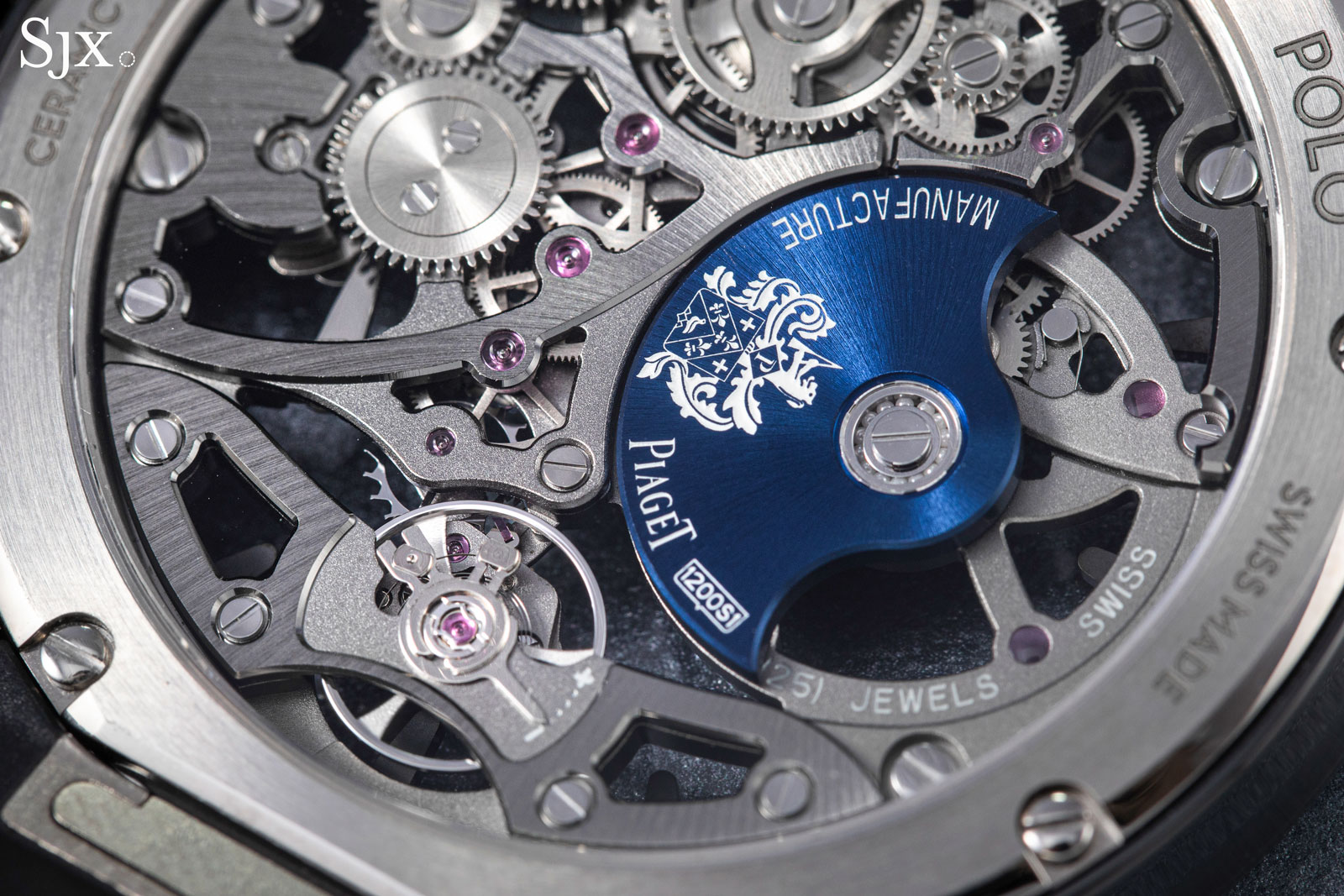
Like all Piaget ultra-thin automatics, the cal. 1200S1 has a micro-rotor
The open-worked cal. 1200S1 is slightly thicker at 2.4 mm, a necessity due to the skeletonisation – the bridges have to be thicker to maintain structural strength – but still flat enough to give the Polo Skeleton its impressively elegant profile.
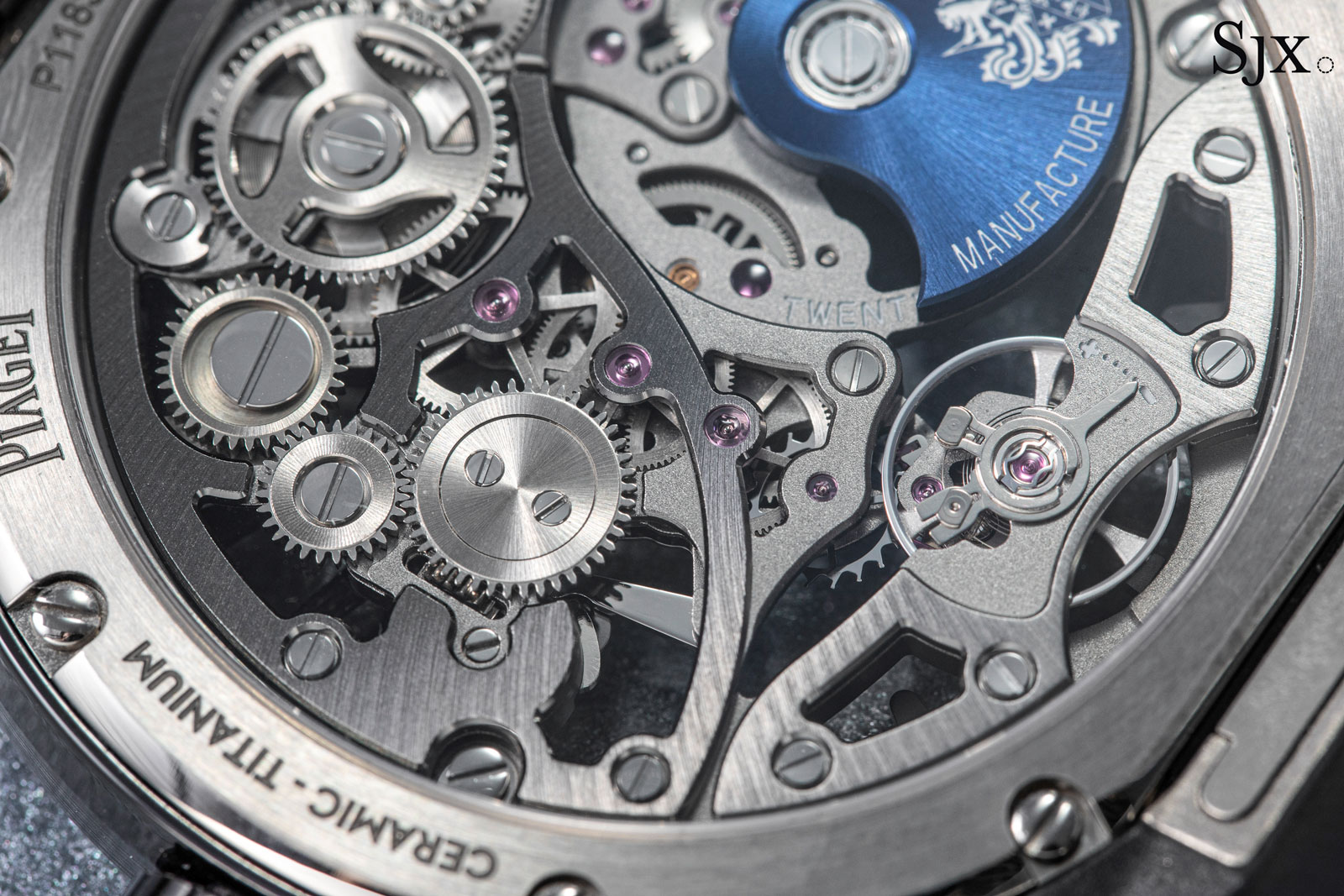
Amongst the other changes to accommodate the skeletonised bridges is the more stable full bridge for the balance that replaces the balance cock on the non-skeletonised version
The skeletonisation is similar in style to that of Piaget’s other open-worked watches. The bridges have flowing outlines with apertures to reveal the moving parts within.
Treated in dark grey to match the case, the bridges are finished with spiral graining on the top, and outlined by polished bevelling, or anglage, along their edges. The decoration is thorough and neat; screws have chamfered heads and sit in countersinks, while the larger wheels have chamfered spokes.
Like most skeleton watches in this price segment, the decoration is high-end industrial-artisanal, which means it’s accomplished by machine and then given a finishing touch by hand.
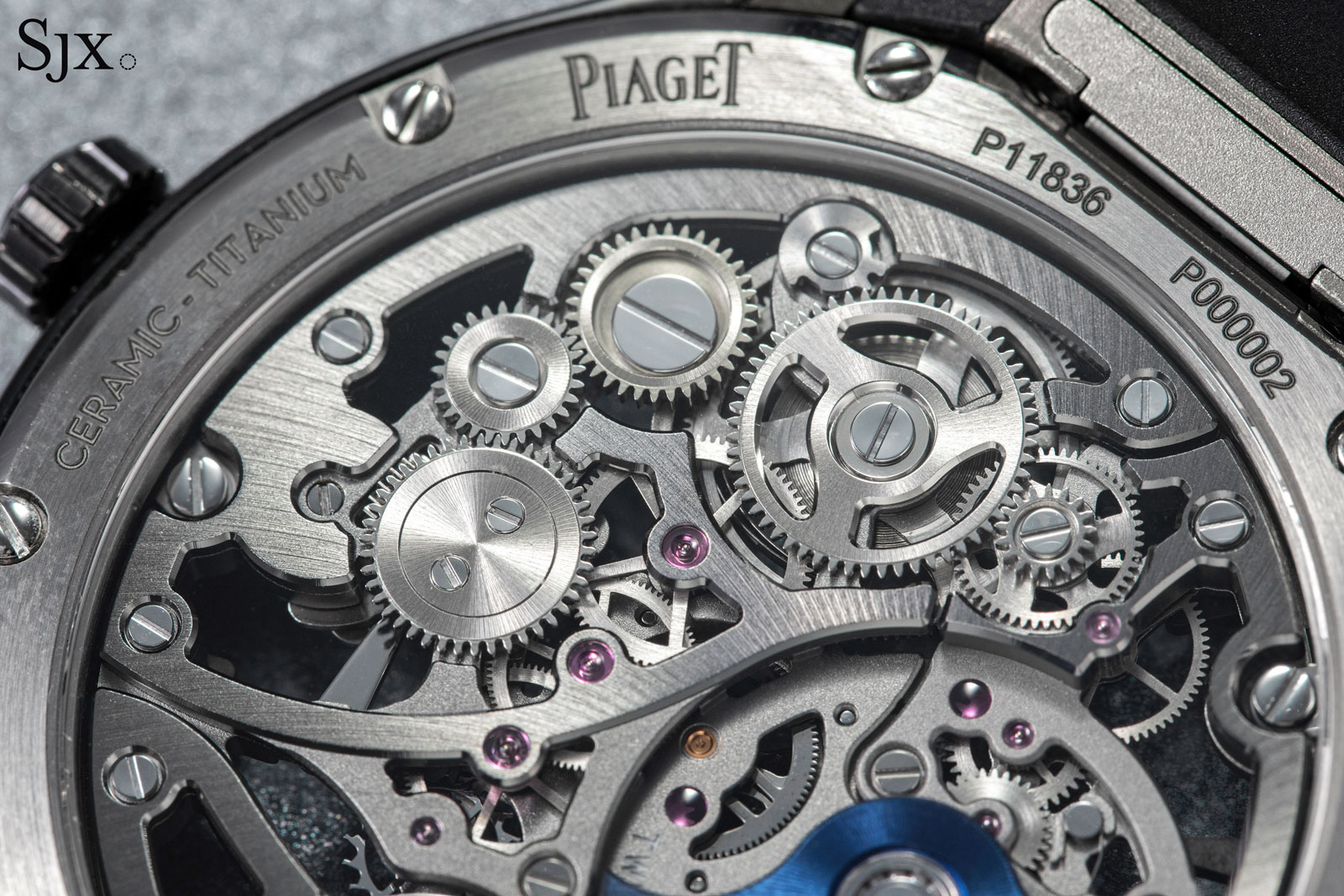
The skeletonised bridges provide a full view of most of the mechanics within the movement, including the winding train and going train
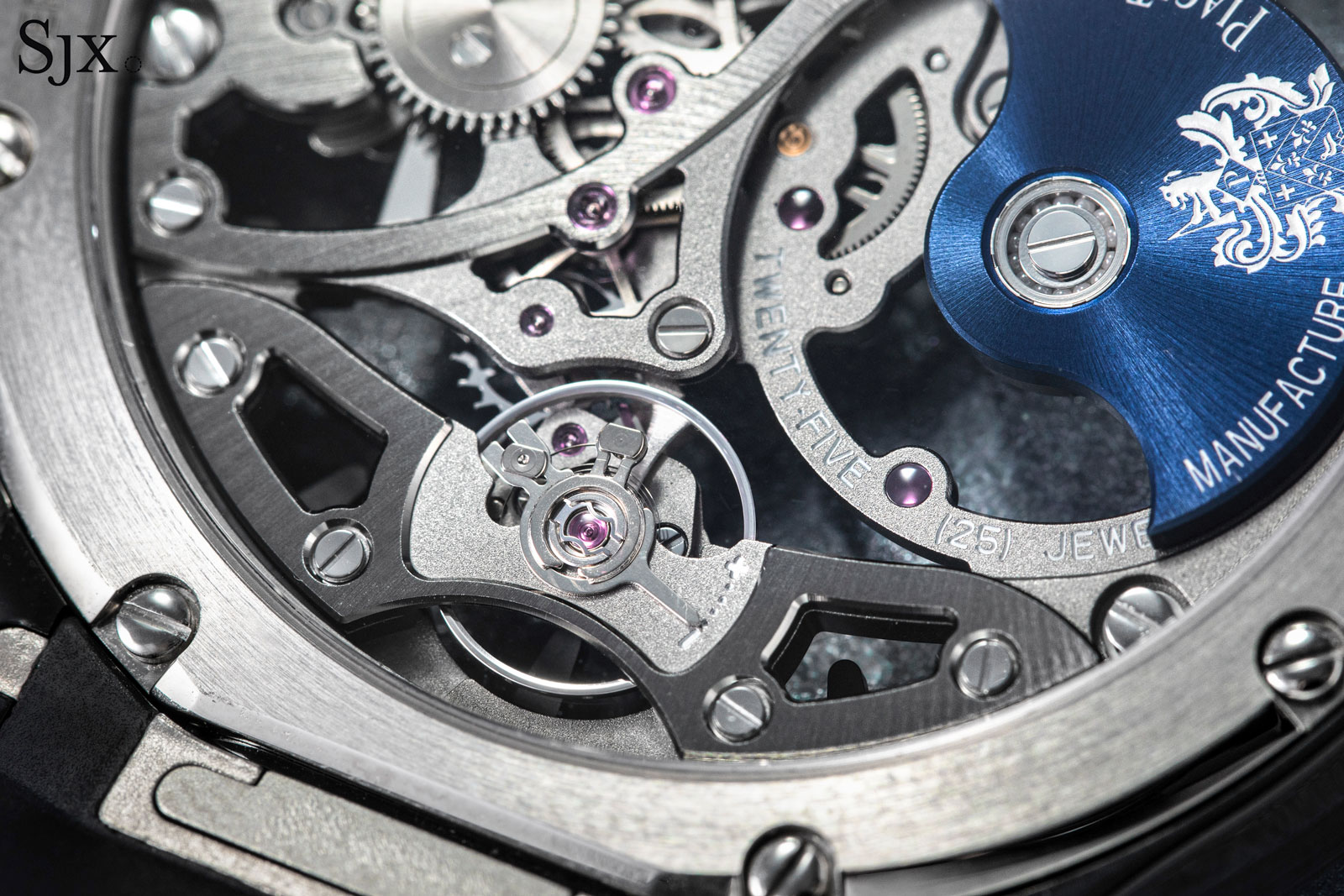
The only thing I would change about the movement is the Etachron regulator index, which looks out of place, particularly on the full bridge for the balance.
Key facts and price
Piaget Polo Skeleton Ceramic
Ref. G0A49011
Diameter: 42 mm
Height: 7.5 mm
Material: Black ceramic and titanium
Crystal: Sapphire
Water resistance: 50 m
Movement: Cal. 1200S1
Functions: Hours and minutes
Winding: Automatic
Frequency: 21,600 beats per hour (3 Hz)
Power reserve: 44 hours
Strap: Black rubber strap with quick release and folding clasp; additional blue rubber strap
Limited edition: No
Availability: Available at Piaget boutiques and retailers starting August 2024
Price: US$42,900
For more, visit Piaget.com.
This was brought to you in partnership with Piaget.
Back to top.








